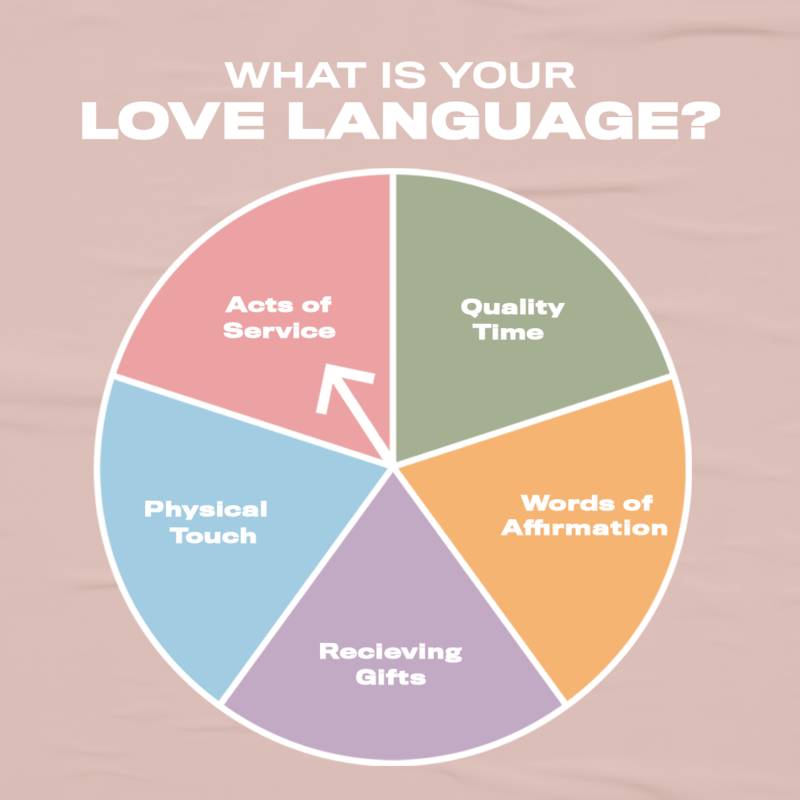Understanding the Importance of Love Languages Chart
The Love Languages Chart serves as a valuable tool in deciphering how individuals perceive and express love. By recognizing that people have varying preferences for how they give and receive affection, this chart helps illuminate the intricacies of human relationships. Understanding these different love languages can lead to more meaningful connections and foster better communication in both personal and professional spheres.
In the workplace, having a grasp of the love languages of your colleagues and superiors can significantly enhance teamwork and collaboration. It allows for a deeper understanding of how appreciation and support are best conveyed, ultimately creating a more positive and productive environment. By tapping into the insights provided by the Love Languages Chart, individuals can tailor their interactions to better resonate with their co-workers’ emotional needs, resulting in improved workplace dynamics.
Identifying Different Love Languages on the Chart
The Love Languages Chart categorizes individuals into five primary love languages: Words of Affirmation, Acts of Service, Receiving Gifts, Quality Time, and Physical Touch. Words of Affirmation is expressed through verbal compliments, encouragement, and appreciation. Individuals who value Acts of Service appreciate when actions speak louder than words, such as helping with tasks or projects. Receiving Gifts signifies love through thoughtful gestures or presents, regardless of size or cost. Quality Time involves giving undivided attention and creating meaningful experiences together. Lastly, Physical Touch conveys love through physical contact, such as hugs, kisses, or holding hands. Understanding these distinctions can help identify one’s own and others’ primary love languages, leading to enhanced interpersonal interactions and relationships.
How Love Languages Chart can Improve Communication with Your Boss
Understanding your boss’s love language can significantly enhance the way you communicate with them. By identifying whether they value acts of service, words of affirmation, quality time, physical touch, or receiving gifts, you can tailor your interactions to resonate more effectively with them. For example, if your boss’s love language is acts of service, completing tasks promptly and efficiently may convey your dedication and commitment more meaningfully than simply saying thank you.
By incorporating the love languages chart into your communication with your boss, you can foster a more positive and collaborative relationship. Recognizing and responding to your boss’s preferred way of expressing and receiving love can lead to improved understanding, empathy, and mutual respect. This, in turn, can create a more supportive and harmonious work environment, ultimately benefiting both your professional growth and the overall success of the team.
Utilizing Love Languages Chart to Strengthen Relationships in the Workplace
Understanding the unique love languages of each individual in the workplace is crucial for fostering deep connections and enhancing collaboration. By utilizing the love languages chart as a guide, managers and team members can tailor their communication and gestures to resonate with their colleagues on a more personal level. This not only leads to improved mutual understanding and trust but also creates a more harmonious and supportive work environment.
Practicing empathy and actively incorporating the concept of love languages into daily interactions can significantly strengthen relationships in the workplace. Whether it’s offering words of affirmation, acts of service, quality time, physical touch, or receiving gifts, adapting your approach to cater to your coworkers’ preferred love languages demonstrates respect, care, and appreciation. This intentional effort to connect on an emotional level can spark positivity, boost morale, and ultimately enhance productivity within teams.
Common Misconceptions about Love Languages Chart
Many people may mistakenly believe that the Love Languages Chart is only applicable in romantic relationships. This is a common misconception that overlooks the versatility of the chart in understanding and improving all types of relationships, including those in the workplace. By limiting its relevance to romantic partnerships, individuals may miss out on the opportunity to foster better communication and connection with colleagues, friends, and even superiors.
Another prevalent misconception is that everyone has only one dominant love language. In reality, individuals may have a primary love language that resonates with them the most, but they can also appreciate gestures and expressions from other love languages. It is important to recognize that people are complex beings with diverse preferences, and the Love Languages Chart serves as a tool to enhance understanding and tailor interactions accordingly.
Practical Tips for Applying Love Languages Chart at Work
When applying the Love Languages Chart in the workplace, it is essential to start by identifying your own primary love language as well as those of your colleagues. Understanding and acknowledging the different love languages present within your team can lead to more effective communication and stronger relationships. By recognizing and respecting each other’s love languages, you can create a more supportive and harmonious work environment.
Once you have identified the love languages of your colleagues, make a conscious effort to tailor your interactions with them accordingly. For example, if a team member’s primary love language is acts of service, you could show appreciation by helping them with a task or project. Similarly, if someone values words of affirmation, offering praise and acknowledgement for their hard work can go a long way in fostering a positive work culture. By actively incorporating love languages into your interactions, you can enhance teamwork, trust, and overall job satisfaction within your workplace.
Benefits of Incorporating Love Languages Chart into Team Dynamics
Understanding and implementing the Love Languages chart within team dynamics can lead to a myriad of benefits. By recognizing and catering to each team member’s preferred love language, a sense of appreciation and value is fostered within the team. This can result in improved trust, communication, and collaboration among team members, ultimately enhancing team morale and cohesion.
Furthermore, incorporating the Love Languages chart into team dynamics can lead to increased empathy and understanding within the team. When team members feel understood and appreciated in a way that resonates with their individual love language, it can strengthen relationships and create a more supportive and harmonious work environment. This can lead to higher levels of job satisfaction, motivation, and productivity among team members, ultimately contributing to the overall success of the team.
Challenges of Implementing Love Languages Chart in a Professional Setting
Implementing the Love Languages Chart in a professional setting comes with certain challenges that can hinder its effectiveness. One common difficulty is the initial resistance or skepticism from employees who may not fully grasp the concept or believe in its relevance to the workplace. Overcoming this skepticism requires clear communication about the benefits of understanding and incorporating love languages into professional relationships.
Another challenge is the need for consistent effort and commitment from all team members in actively applying the principles of the Love Languages Chart. Without buy-in from everyone involved, the potential for miscommunication or misinterpretation of gestures aligned with specific love languages can arise, leading to misunderstandings or even conflicts. Therefore, fostering a culture of openness, understanding, and willingness to learn and adapt is essential for successful implementation of the Love Languages Chart in a professional environment.
Measuring Success with Love Languages Chart in the Workplace
Success in utilizing the Love Languages Chart in the workplace can be measured by the improvement in communication and understanding between individuals. When employees and employers are able to effectively identify and cater to each other’s love languages, conflicts are minimized, productivity is enhanced, and a more positive work environment is fostered. This can be observed through increased cooperation, decreased misunderstandings, and a general sense of unity within the team.
Another way to measure success with the Love Languages Chart in the workplace is by evaluating the level of emotional connection and engagement among team members. When individuals feel valued and appreciated in the way that resonates with their specific love language, they are more likely to be motivated, collaborative, and satisfied with their work. This can result in higher levels of job satisfaction, improved morale, and ultimately, better overall performance within the organization.
Future Trends in Using Love Languages Chart for Employee Engagement
With a growing emphasis on employee well-being and satisfaction in the workplace, the use of Love Languages Charts for employee engagement is expected to become more prevalent in the future. Organizations are realizing the significance of understanding their employees on a deeper level and catering to their unique emotional needs. By implementing Love Languages Charts, companies can create a more personalized approach to employee engagement, resulting in increased job satisfaction and loyalty.
Moreover, as remote work and virtual communication continue to shape the modern workplace, the incorporation of Love Languages Charts can play a crucial role in bridging the gap between employees and managers. By utilizing these tools, leaders can gain insights into how best to support their team members, even from a distance. The future trends in using Love Languages Charts for employee engagement point towards a more empathetic and relationship-focused approach to fostering a positive work environment.


